AMD reveals a faster graphics card than the GTX 1660 Ti, plus new mobile processors
AMD's CES 2020 keynote was filled with what CEO Lisa Su called "disruptive performance."
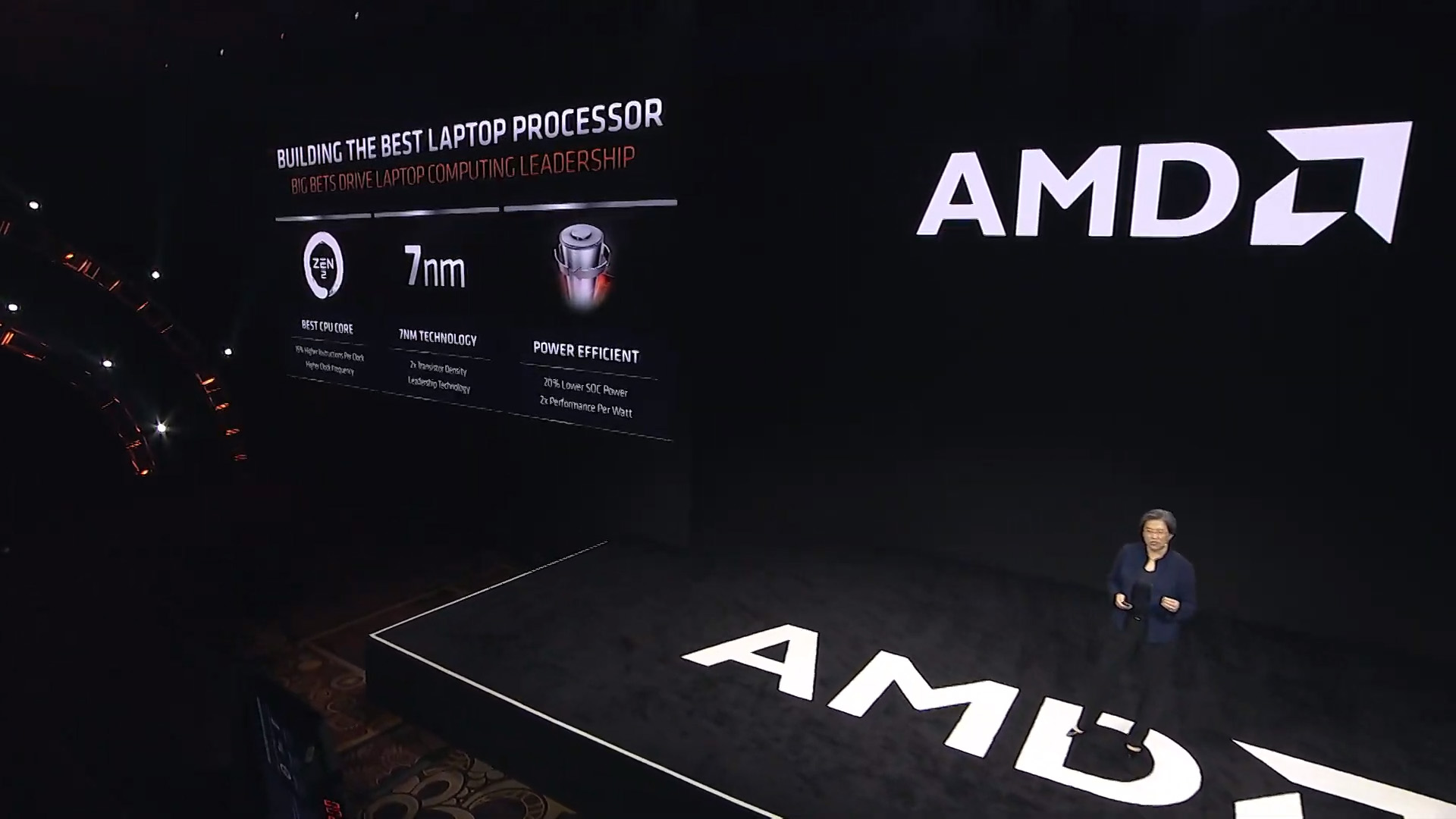
AMD has rolled out a steady stream of hardware since last year—3rd-gen Ryzen processors, RX 5700 and 5500-series graphics cards, plus the all new RDNA architecture—and there's no sign of it stopping any time soon. What AMD showed off today during its CES Media Days press conference proves that the company is still full-steam ahead with all the advancements to its CPUs, GPUs, and everything in-between.
To start, AMD will have its 3rd-gen Ryzen 4000 mobile processors available in select laptops during Q1 of this years—specifically the U-series and H-series, which are geared toward different segments of the marketplace. The Ryzen 7 4800U, which is designed for ultra-thin consumer laptops, has 8 Zen 2 cores with 16 threads, a 1.8 GHz base with up to a 4.2 GHz Boost, and 15W of TDP (thermal design power).
According to AMD, this mobile processor delivers a 4 percent gain in singlethreaded performance, a 90 percent multithreaded gain, and a 28 percent gain in graphics over the Intel Core i7-1065G7, with twice the performance per watt compared to its 2nd-gen 12nm Ryzen mobile processors.
The first laptops, which include the new Lenovo Yoga Slim 7, will be available in Q1 2020. A total of over 100+ systems with this processor are expected to be released over the course of this year.
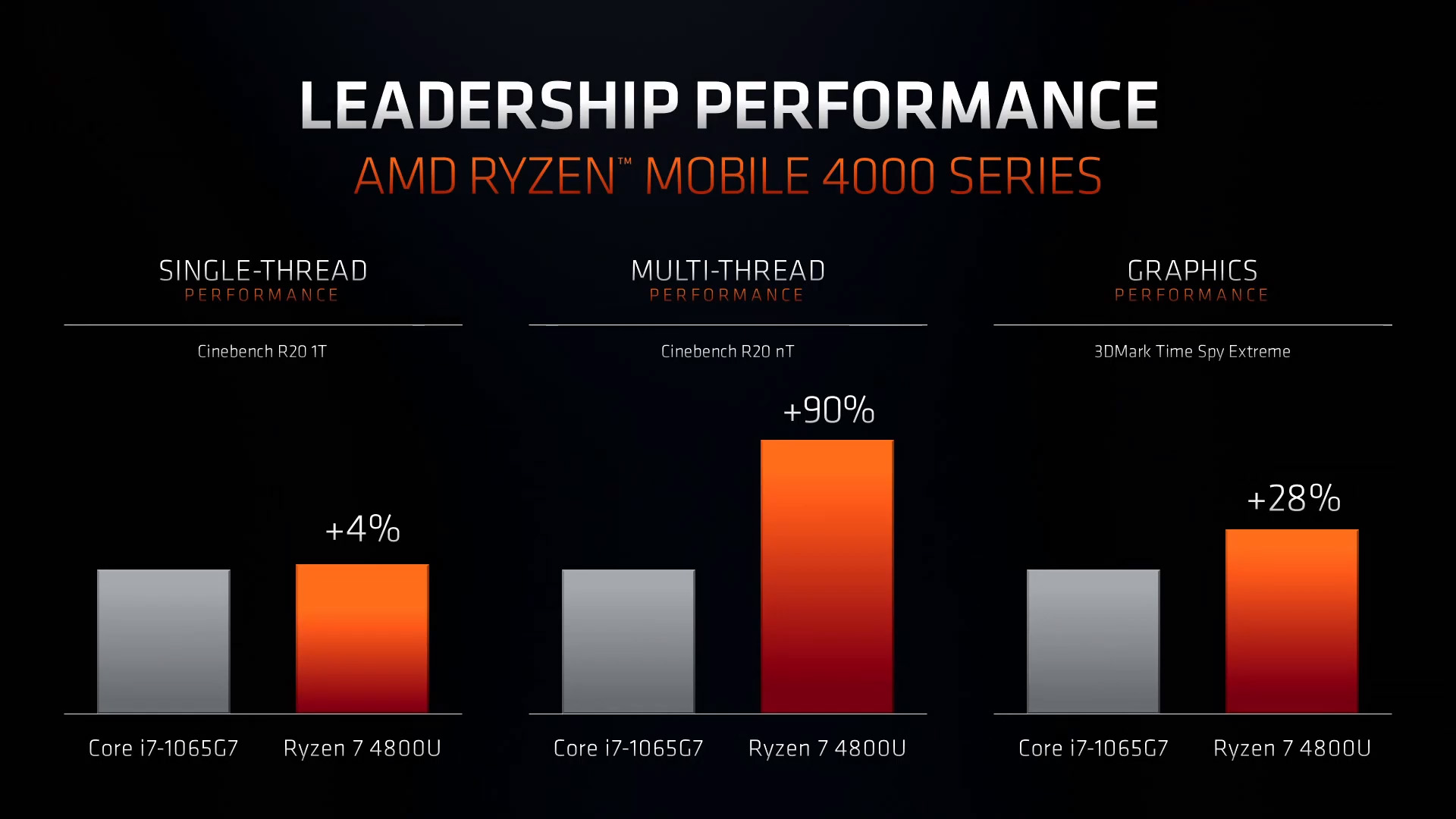
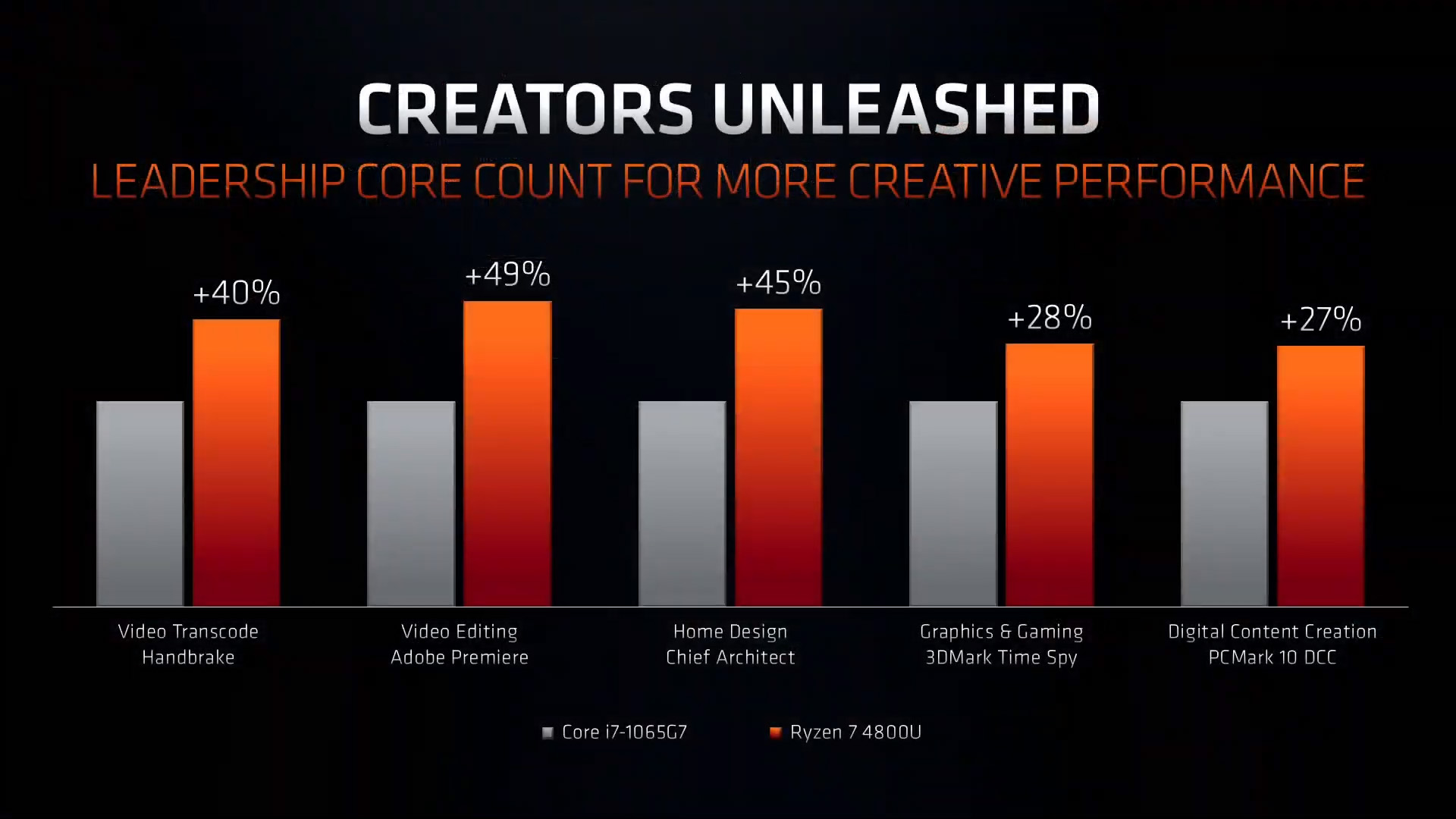
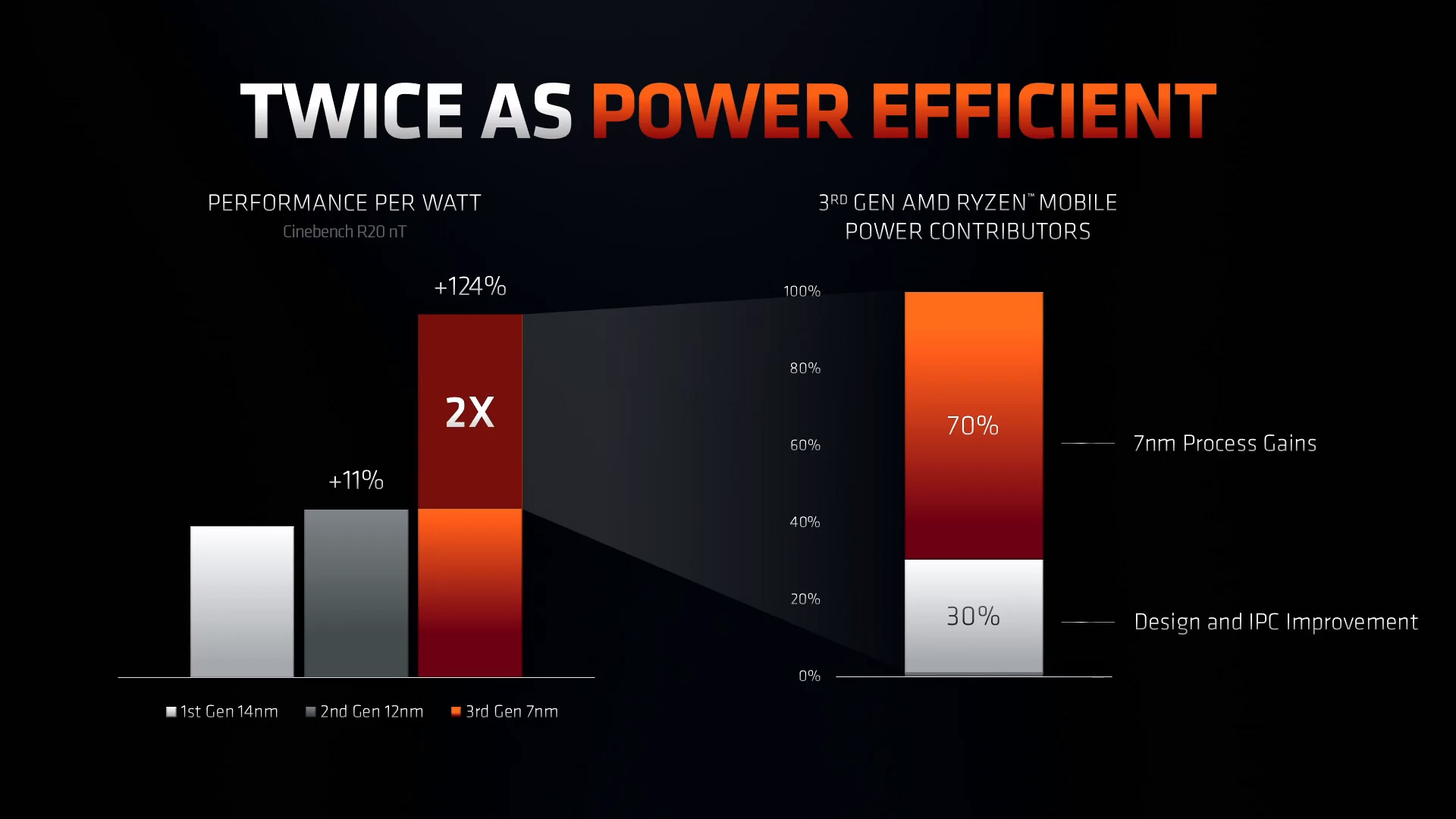
The Ryzen 7 4800H, on the other hand, is built for gaming and creator laptops with what AMD calls "desktop caliber performance." It's an 8-core/16-thread CPU with a 2.9 GHz base clock and up to a 4.2 GHz boost, and a 45W TDP. According to AMD, the Ryzen 7 4800H has the same TDP as Intel's Core i7-9750H, but a 39 percent increase in gaming performance. Those tests Intel showed yesterday? They're now outdated.
AMD claims the 4800H can also deliver a 26 percent increase in performance over Intel's Core i7-9700K desktop processor, which has a 95W TDP. So basically, the Ryzen 7 4800H is delivering faster performance at a lower TDP. We'll be looking to test these performance claims ourselves in the coming month.
This processor will only be available in the new Asus Zephyrus G14 notebook, which releases in February 2020. The laptop itself is just 3.5 lbs., has over 10 hours of battery life, and features an animated LED marquee on the lid that you can personalize with messages and different colors.
The biggest gaming news, reviews and hardware deals
Keep up to date with the most important stories and the best deals, as picked by the PC Gamer team.
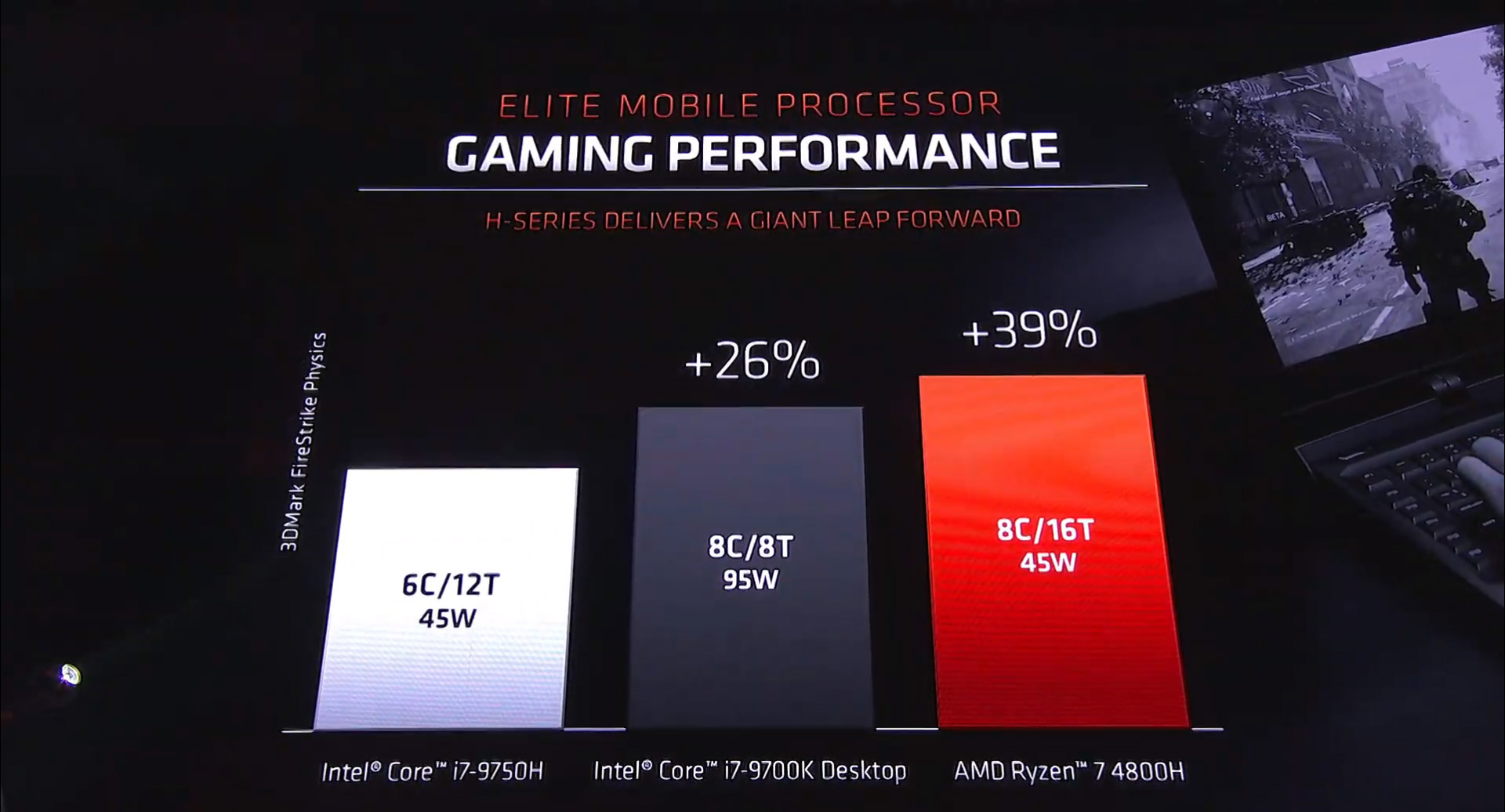
The announcements didn't stop at mobile processors, though. January 21, 2020, AMD will be releasing its answer to the GTX 1660 Ti—the RX 5600 XT for $279. This dedicated gaming desktop GPU is what AMD calls the "ultimate 1080p" graphics card, as it's designed specifically for 1080p gaming, including esports. Like the 5700 and 5500-series, it's based on AMD's new RDNA architecture and has a total of 36 compute units—with a base clock of 1375MHz, a boost clock of up to 1560MHz, and 6GB of GDDR6.
Until we get our hands on one to test, we'll have to go by AMD's performance claims of a 12 percent to a 26 percent fps increase (at max settings) in games like The Division 2 and Apex Legends compared to Nvidia's GeForce GTX 1660 Ti. That seems pretty reasonable, considering where the Radeon RX 5700 lands.
Additionally, AMD revealed that both its 5600 and 5700 series would be available in gaming laptops during the first half of 2020. However, the first of those, Dell's G5 SE will be available during Q2 2020 with a Radeon 5600M starting at $799. Included with that laptop is something called SmartShift, which gives you up to a 10 percent fps boost without having to reconfigure your game settings or your entire system. (AMD noted that this is a preliminary result, so that number could change.)
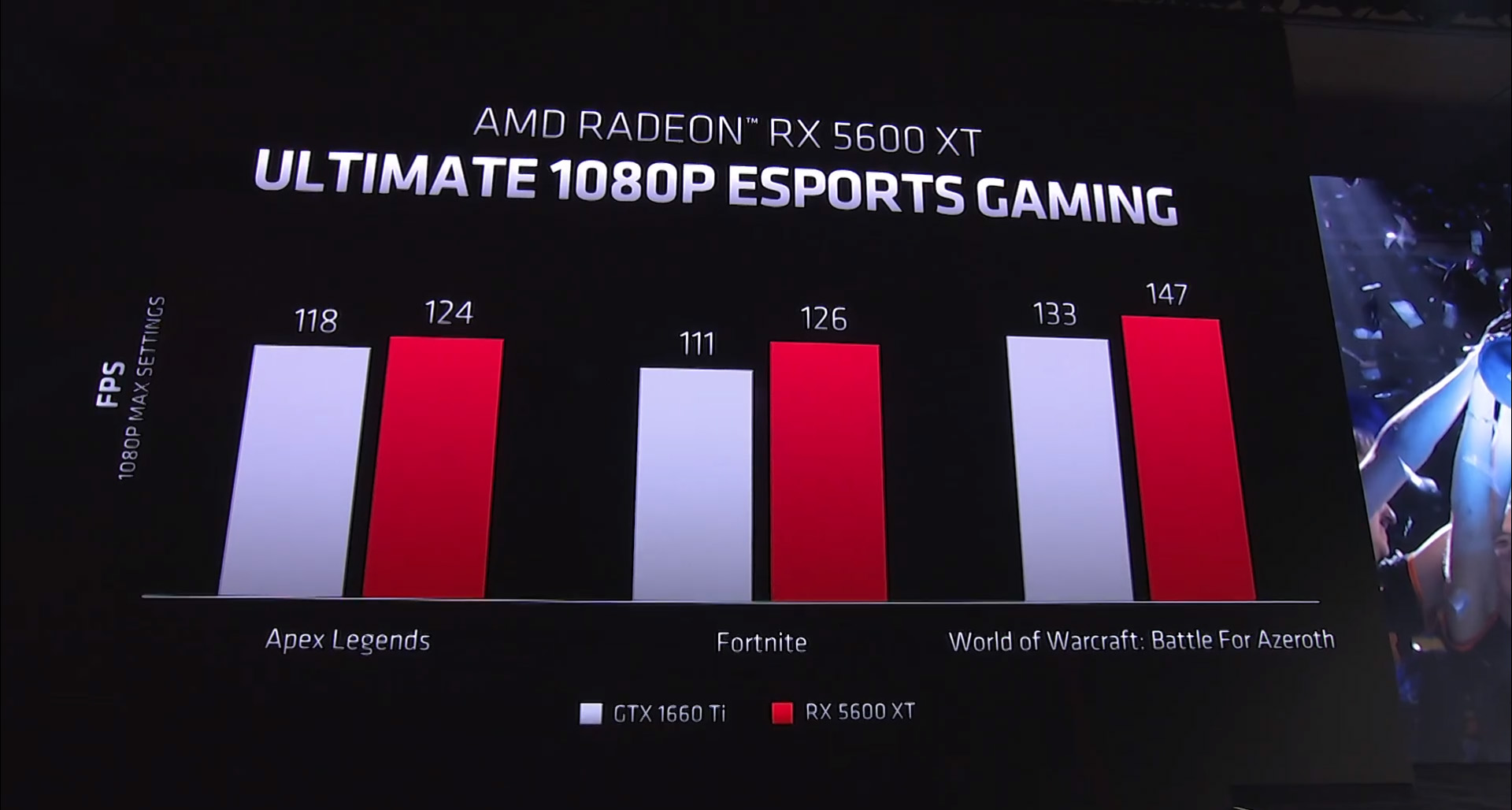
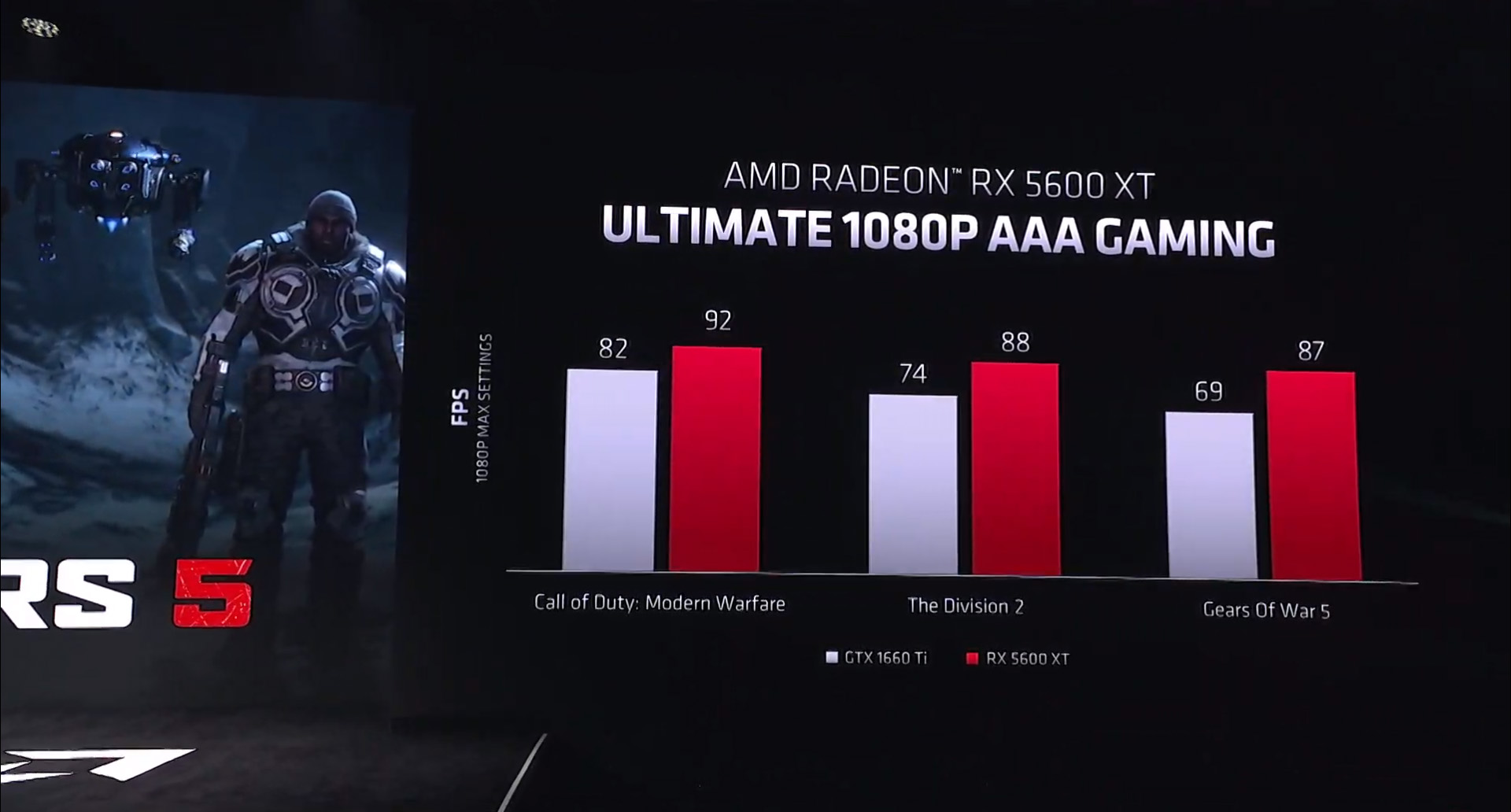
Last but not least is another long-awaited CPU announcement—the Ryzen Threadripper 3990X, a monster CPU with 64-cores/128 threads. This isn't a gaming CPU (and at $3,990, costs a lot more than most high-end gaming rigs), but a super fast processor for rendering 3D animations and video. AMD claims that it's 30 percent faster—or as a specific example, it was able to render a V-Ray output 30 minutes faster—than Intel's Dual Xeon Platinum 8280. That means the 3990X can take down Intel's dual-socket competition for a much lower price.
The Ryzen Threadripper 3990X will be available on February 7, 2020.


